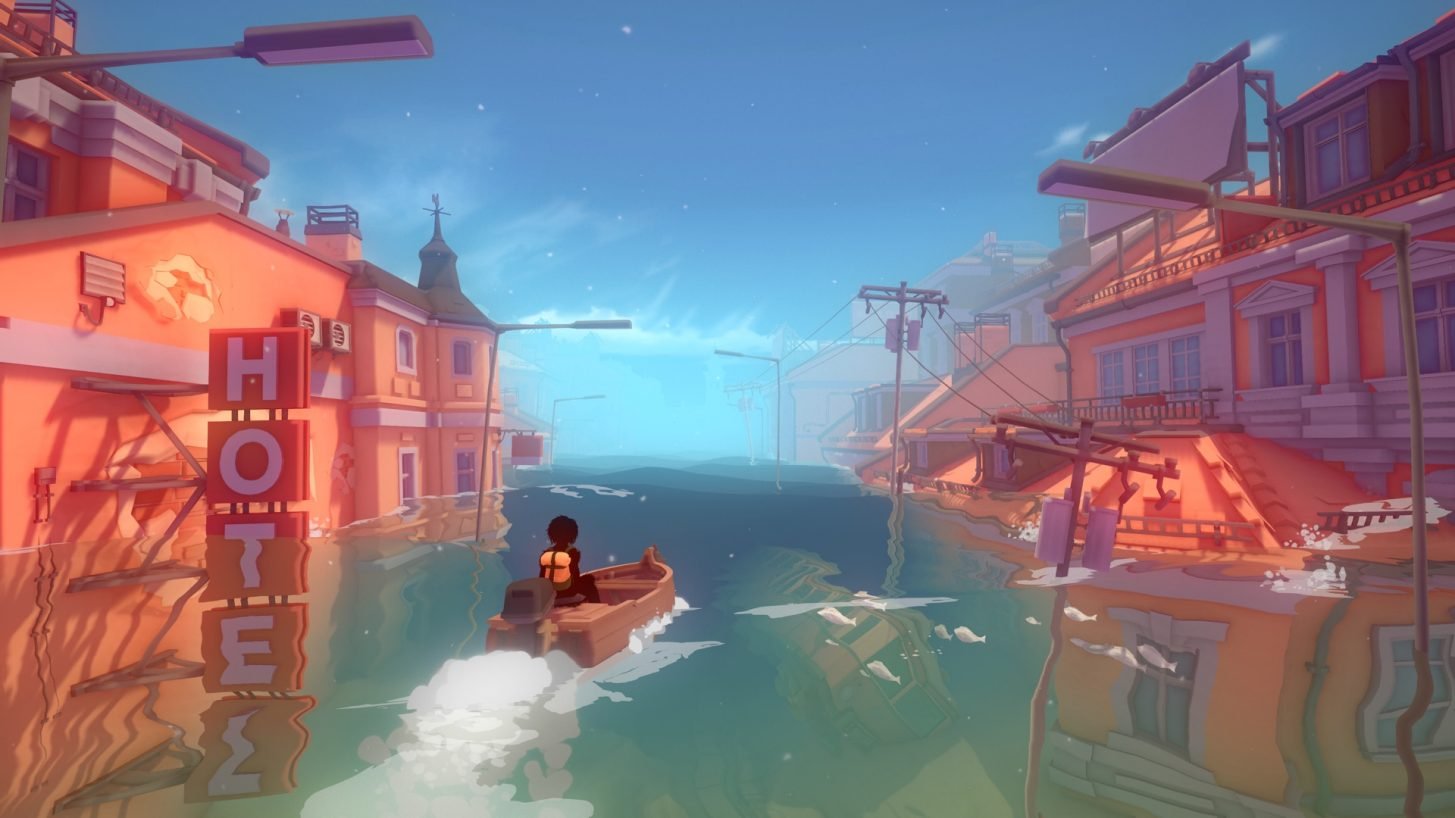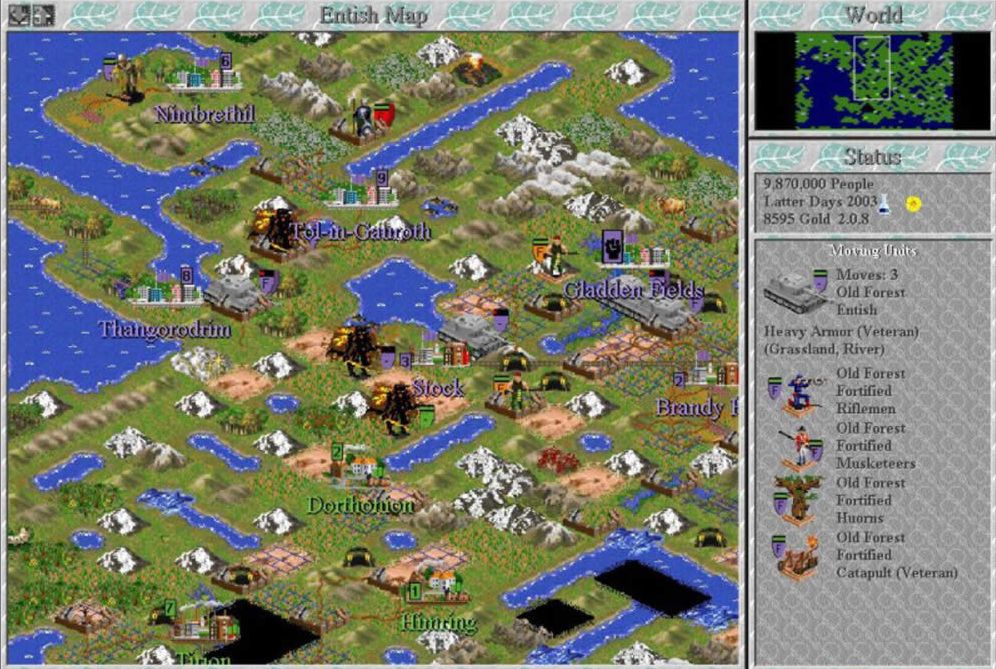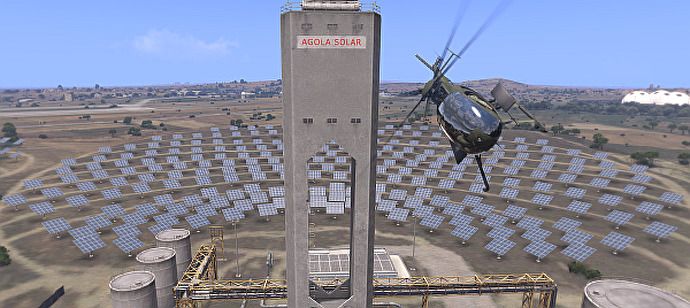How 'climate crisis games' could better model our problems and our future
Is it getting hot in here?
In Vectorpark’s Sandcastles, you build fantastic towers and watch the waves erase your work every 10 seconds. It’s a very direct metaphor for the global climate crisis that threatens to flood coastal cities and exacerbate natural disasters. Sandcastles confronts us with our totally predictable watery doom, but we also find fun and expression in our totally foreseeable destruction. When the planet dies, at least we’ll be entertained.
Before you commit to starving and drowning, you should probably understand how and why it’ll happen. To imagine this nightmarish hellworld, readers can flip through climate fiction novels (“cli-fi”) and movie-goers can watch a big unprofitable climate disaster blockbuster every few years. But us mouse-clickers, we obviously don’t read books or watch movies. Instead, we play with climate. Behold, the climate crisis game.
The danger of the climate crisis and rising sea levels requires thinking of water as the border of human habitability. Countless games continue this logic when water kills you, water is impassable, or water stretches infinitely to the horizon. Here, water is like the edge of our world and imagination. In Half-Life 2, players quickly learn that wading too far into the ocean will summon swarms of scary leeches, but still, the ocean isn't evil and it’s not going out of its way to kill you. In fact, you’re supposed to pity the ocean. In the coastline road trip chapter “Highway 17”, the dry seabed and unusually low waterline is supposed to clue you in to how the big bad colonialist aliens are stealing all of Earth’s water. Not that you can do anything about it.
The BioShock games cleverly play with this watery death trope. A steampunk capitalist builds an underwater city and treats the ocean primarily as pleasant scenery, failing to recognize the inevitable political and environmental pressures that drown the city and its ideology. This is kinda why we laugh at failed libertarian seasteaders in real-life too. You can’t just ignore the rest of the world and live in the ocean, dummy. There’s a reason no one else is out there.
Flood games are specifically about the challenge of living with water. They evoke famous flood narratives like Noah’s Ark or The Great Flood of China, existing in a mythical time where the entire human world has been punished for some deep flaw. Indie flood exploration games like Submerged and the upcoming Sea Of Solitude imagine flood worlds inhabited only by the monstrous or supernatural, because that’s all that will be left of our souls when society is destroyed.
But because these flood games work like modern flood myths, the monsters are fairly direct metaphors for a world pushed out of balance. If you collect all the books and pages in Submerged, you get to read a long fragmented comic strip backstory about (SPOILER) a huge city punished for its endless careless growth with a blotted-out sun and never-ending storms, as well as another more personal backstory about leaving an abusive alcoholic father. So the player character’s epic journey to heal herself and her sick brother merges with the environmentalist city lore to create this coming-of-age story about healing both family and the world.
In contrast to Half-Life 2 or BioShock, flood games normalise the ocean as a systemic terrain where you can play. The ocean is not to be feared, it is to be respected. And like a lot of myths, the flood game chronicles a difficult personal challenge but with the inevitability of heroic survival and new understanding. Sure, everyone died, but now we’ll become better people!
In contrast, ice age survival games like Frostpunk and The Long Dark argue that survival will be miserable and we’ll all be forced to sacrifice our humanity. Every story event in Frostpunk evokes desperate dilemmas to push your city closer to an extreme ideology rooted in “Faith” or “Order”, while The Long Dark makes your clothes, weapons, and health deteriorate constantly, reflecting the constant mental strain of survival. The most depressing Long Dark players suggest the best long-term survival strategy to survive several in-game years involves “hibernating” by staring at nothing and praying for sleep to relieve you of boredom. If solitary confinement is the most effective survival strategy, you have to question the value of survival at all.
While these cold grim sims do a great job of dramatising the stakes of a changed climate, both games hide the origins and details of their “global cooling” events and never really confront the player with human complicity. Frostpunk hides a reference to sulphurous “saffron cloud” superweapons in a random lore entry, while The Long Dark’s chapter 1 story mode NPC alludes to a global recession and geomagnetic storm once and never again. It’s the opposite of the typical JRPG eagerly diving into its own environmentalist world-building about the dangers of greedy materialistic empires extracting too much magic crystal or elf oil or whatever.
Ice age survival games reject history in favor of celebrating individual responsibility and personal austerity. When the world ends, then the reason why it ended won’t matter anymore. When a game is about day-to-day survival, it’s hard to think any bigger or longer than that. A game about preventing the apocalypse, not just surviving it, needs to think about life on a whole different scale.
Zoom out from your daily life, and imagine how towns and cities change from week to week. Zoom out again, and see how countries shift every month. Zoom out one last time and you get the world sim, a game about a planet that changes across many years. History with an H suddenly becomes much more relevant here, because History is what you did 15 minutes ago. When you can witness and remember long-term environmental changes, then you can properly play with climate.
Fate Of The World is a wonderful world simulation game about how the planet will be fucked across several decades. Quintin Smith went into it back in 2011, marveling at how it throws all these statistics and consequences at you. It’s one of the few activist “games for change” projects that actually engages with the mind-boggling complexity of reforming a planet.
The first level is Africa. Your objective is to somewhat improve the quality of life in Africa by the year 2045, as measured by life expectancy and other socioeconomic factors. It’s a brutal and punishing tutorial. When I played, I naively imposed a Western progressive wet dream model of education and rapid green technology on Africa… causing widespread unrest across Northern Africa from my lack of investment in basic infrastructure and safety. So then I started hiring private paramilitary contractors to continue imposing my green energy plans. A couple of decades of famine and martial law later, I left Africa much worse than how I found it. Not to mention all the animal extinctions that happened on my watch.
I’m sure you can get better at it like Dark Souls. But when you first pick it up, it’s about how the world is inscrutable and cruel. Reform is not only difficult, but it’s hard to know if reform even improved anything. It’d be easier if you could go back in time and avoid producing greenhouse gases in the first place.
Civilization 1 and 2’s global warming mechanic lets most players basically avoid climate change. It doesn’t take that much micromanagement or work to maintain the environment. Firaxis have since reached deeper into the climate bag, because this year’s Civilization 6 Gathering Storm DLC goes way beyond the simple global warming systems of the past and features a whole full-blown "climate". Every unit, power plant, and instance of deforestation produces CO2 tracked across the entire world for the entire game. Played on typical settings, some polar ice usually melts and 1.5m sea level rises are basically inevitable by the time your civilization has advanced to the information age. But much like in previous games, none of this is a big deal. Natural disasters come and go, coastal city centers are immune to flooding, while unsabotagable flood barriers can protect the rest of your city districts from rising sea levels.
Gathering Storm’s green technology ends up being more valuable as a late game tactic to earn diplomatic favors and monetise your cities’ ocean tiles with offshore wind farms and unironic seasteads. Yes, it simulates how a climate crisis emerges from a complex history of warfare and industrialization, but it lacks the stakes of other climate games unless you play as a moustache-twirling climate villain, building a new coal plant every turn. Its strength as a randomized Civilization subsystem is also a weakness. It must be balanced to be always manageable and never catastrophic, unless you consciously push the limits. A later patch even halved the CO2 emissions from units, to slow down the rate of climate change further and make catastrophe even less likely. Perhaps this is the core rhetorical weakness of simulating climate change as a game system: it's either overwhelming like in Fate of the World, or mildly inconvenient like in Civilization. Plus, if climate games like Gathering Storm seek to convert climate sceptics by modeling human causes of climate change, it might not work, because the rarity of severe in-game penalties may only support the skeptic’s belief that the climate crisis has been exaggerated.
We’ve seen how flood games, ice age games, and world sims, are all invested in the idea of a climate apocalypse. Yet we’re forgetting the rarest climate game of all: the climate utopia game that has already forgotten about disaster. You’ll find this utopia in an unlikely place.
In the near-future 2030s of the painfully detailed military manshooter Arma 3, humanity has successfully transitioned to renewable energy. As Ben Abraham details in his robust study of Arma 3, the game’s main map features numerous wind farms, massive solar thermal plants, and even tidal generators, with not a coal or nuclear plant in sight. This war game doesn’t even try to simulate energy, pollution, or even climate, but it’s still one of the most optimistic climate games ever, just for its simple static depiction of a future that hasn’t been cancelled. In fact, this military realism imagines a green future that has already happened, as if it were probable or inevitable. It’s either really sad or really funny that Arma 3 is one of the most progressive and optimistic games on climate change. Without even trying.
We could all probably use more games about near-future climate utopias and idyllic solarpunk societies, not necessarily for their worlds or policy ideas, but simply to start practicing their attitudes. Don’t get me wrong, indie anxiety and vulnerability is important and necessary, but maybe climate games can also stroll into the room with the same self-assured confidence as a hardcore AAA military sim. These games would wear aviator sunglasses and a backwards baseball cap, vaguely promise some DLC to an 18-44 year old man with a 16,000 DPI mouse and obvious erection, and then huskily whisper into eager ears: run away with me and we’ll decarbonize the world, baby.
Pre-order now!








